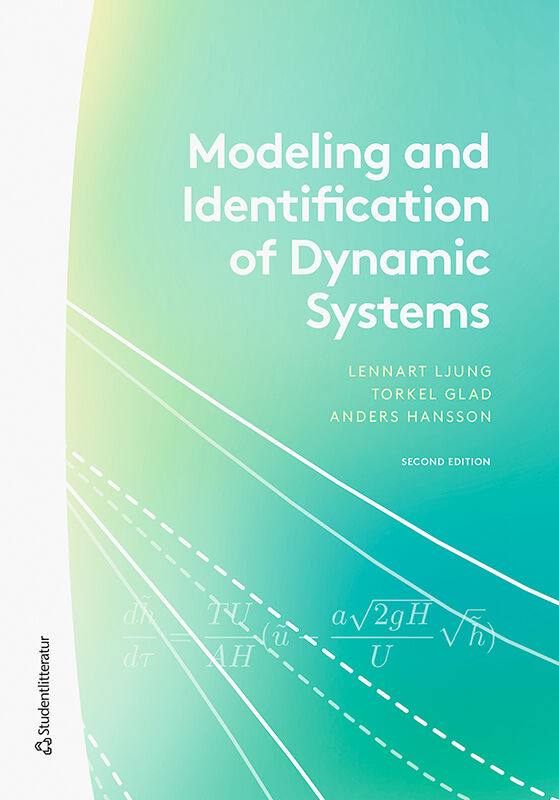Varukorg
Varukorgen inkl. moms 0 kr
Elektronisk distribution
Frakt inkl. moms 0 kr
Varav moms (6 %) 0 kr
Varav moms (25 %) 0 kr
Öresutjämning 0 kr
Att betala inkl. moms 0 kr

Modeling and Identification of Dynamic Systems
1 Systems and Models 11
1 1 To Describe Reality with Models 11
1 2 Systems and Experiments 11
1 3 What is a Model? 13
1 4 Models and Simulation 14
1 5 How to Build Models 14
1 6 How to Verify Models 15
1 7 What are Models Used for? 17
1 8 Modeling as a Scientific Discipline 18
2 Examples of Models 19
2 1 Introduction 19
2 2 An Ecological System 19
2 3 A Flow System 22
2 4 A Simple Electrical Circuit 27
2 5 Models of Human Speech 28
2 6 A Connected Mechanical System 30
2 7 Model Characteristics 31
2 8 Comments 33
3 Types of Models 35
3 1 Models 35
3 2 Black Boxes and Simple Experiments 38
3 3 Variables and Signals 49
3 4 State-space Models 53
3 5 Stationary Solutions and Linearization 55
3 6 Connecting State-space Models 62
3 7 Comments 64
4 Principles of Physical Modeling 65
4 1 Introduction 65
4 2 The Phases of Modeling 65
4 3 What are the Requirements for a Modeling Tool? 69
4 4 Dimensionless Variables and Scaling 72
4 5 Simplified Models 83
4 6 Comments 90
4 7 Appendix 90
5 Some Basic Relationships in Physics 93
5 1 Introduction 93
5 2 Electrical Circuits 93
5 3 Mechanical Translation 98
5 4 Mechanical Rotation 102
5 5 Flow Systems 105
5 6 Thermal Systems 109
5 7 Domain Independent Modeling 112
5 8 Connecting Different Domains 113
5 9 Comments 115
6 Bond Graphs 117
6 1 Efforts and Flows 117
6 2 Junctions 120
6 3 Simple Bond Graphs 124
6 4 Transformers and Gyrators 126
6 5 Systems with Mixed Physical Variables 127
6 6 Simplifications in Bond Graphs 130
6 7 From Bond Graphs to Equations – Causality 133
6 8 Causality and Equations 141
6 9 Controlled Elements 146
6 10 Systematic Bond Graph Modeling 151
6 11 Further Remarks 154
6 12 Comments 156
7 DAE Models 157
7 1 Introduction 157
7 2 DAE Models 157
7 3 Linear DAE Systems 160
7 4 Nonlinear DAE models 166
7 5 DAE Models and Model Simplification 168
7 6 Comments 174
7 7 Appendix 174
8 Object-oriented Modeling 177
8 1 Introduction 177
8 2 Model Libraries and Graphical Interfaces 178
8 3 Object-oriented Modeling – Simscape and Modelica 179
8 4 Model Libraries and Model Extensions 184
8 5 Aggregated Models in Modelica 188
8 6 Equation-based Models 191
8 7 Comments 192
9 Models with Disturbances 193
9 1 Discrete Time Models 193
9 2 Disturbances in Dynamic Models 195
9 3 Description of Signals in the Time Domain 200
9 4 Description of Signals in the Frequency Domain 203
9 5 Linking Continuous Time and Discrete Time Models 211
9 6 Comments 218
9 7 Appendix 220
10 Correlation and Spectral Analysis 221
10 1 Correlation Analysis 221
10 2 Fourier Analysis 224
10 3 Estimation of Signal Spectra from Discrete Time Data 228
10 4 Estimating Transfer Functions Using Spectral Analysis 237
10 5 Comments 241
10 6 Appendix 242
11 Parameter Estimation in Linear Models 247
11 1 Grey-box Models 248
11 2 Linear Black-Box Models 251
11 3 Fitting Parameterized Models to Data 259
11 4 Model Properties 267
11 5 Comments 278
11 6 Appendix 279
12 Parameter Estimation in Nonlinear Models 283
12 1 The Basic Principle – Minimize the Prediction Errors 283
12 2 Light-Grey-Box Nonlinear Models 284
12 3 Dark-Grey-box Nonlinear Models 291
12 4 Neural Network as Nonlinear Black-box Models 302
12 5 Parameter Estimation Techniques 309
12 6 Comments 311
12 7 Appendix: Derivatives of the Prediction Function 312
13 System Identification as a Tool for Modeling 315
13 1 Program Packages for Identification 316
13 2 Design of Identification Experiments 318
13 3 Post-treatment of Data 325
13 4 Choice of Model Structure 331
13 5 Model Validation 339
13 6 An Example 342
13 7 Comments 346
14 Simulation of Mathematical Models 349
14 1 Introduction 349
14 2 Simulating State-space Models 349
14 3 Solution Methods for DAE Models 359
14 4 Comments 360
15 Model Validation and Model Use 361
15 1 Model Validation 361
15 2 Domain of Validity of the Model 364
15 3 Remaining Critical of the Model 365
15 4 Use of Several Models 368
A Linear Systems: Description and Properties 369
A 1 Continuous Time Systems 369
A 2 Discrete Time Models 371
A 3 Links between Continuous and Discrete Time Models 373
A 4 Alias 373
B Linearization 377
B 1 Continuous Time Models 377
B 2 Discrete Time Models 379
C Random Variables and Stochastic Processes 381
C 1 Probabilities and Random Variables 381
C 2 Stochastic Processes 384
C 3 Two Basic Convergence Concepts 385
D Signal Spectra 387
D 1 Time-continuous Deterministic Signal with Finite Energy 387
D 2 Sampled Deterministic Signals with Finite Energy 388
D 3 Signals with Infinite Energy: The Power Spectrum 389
D 4 Connections between the Continuous and the Sampled Signals 390
D 5 Stochastic Processes 391
Information
- Författare:
- Lennart Ljung Torkel Glad Anders Hansson
- Språk:
- Engelska
- ISBN:
- 9789144153452
- Utgivningsår:
- 2016
- Revisionsår:
- 2021
- Artikelnummer:
- 39466-02
- Upplaga:
- Andra
- Sidantal:
- 484